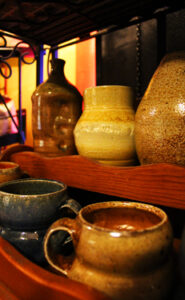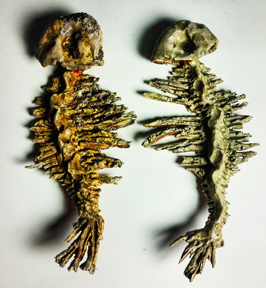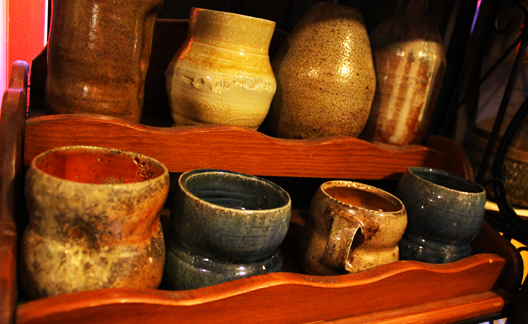Potter Brandy Green
by Joshua Heston
“I really love working with my hands and I hate sitting at a computer,” confesses Brandy Green, studio artist and senior at College of the Ozarks. Her emphasis is in ceramics and fibers.
Growing up in Holden, Missouri, Green was introduced to fiber art at a young age.
“My grandma taught me how to sew when I was 10 years old. Clay [however] was still new to me even just a year ago. I fell in love with it.” Her pottery work has caught the attention of the local community. Green was a demonstrating artist with the Branson Art Council’s 2015 June art walk and her functional pottery is sold at local coffee shop Vintage Paris.
“With every mug I create, I like to go off what emotions I have. I have a hard time doing sets and prefer making individual pieces.”
Explaining various techniques, Green notes, “I really like using stoneware, which has a high-fire clay body, but I am starting to switch over to porcelain, which is a lot smoother and a lot harder to throw, but it produces a thinner, lighter mug.”
Pottery clays are defined by the heat in which they are fired. A high fire clay body goes into a kiln heated into the 2,280 to 2,345°F range. “A red clay, which is terra cotta earthenware, is a low fire clay body. The iron in the clay is what makes it red,” adds Green. “Firing in the wood kiln takes a lot more time, energy and effort and I’m sick for a week from all the smoke!

Ceramic and fiber artist Brandy Green. Photo by Mariah Merath. Photo courtesy of Brandy Green.
“But I have a lot more control and it makes me feel the kiln is mine.”
The study of ceramics, however, is far more than simply throwing simple mugs and bowls. Green explains, “Lately, I’ve been looking at [the work of] Eva Hesse, a Jewish artist who fled Germany right before the Holocaust. I really love what she is doing — it’s tying in clay and fibers, it’s simplification, it’s raw motion.
Gin O’Keefe, an increasingly well-known abstract ceramics artist and College of the Ozarks alumni, recently spoke at the college. Green remembers the event vividly. “We clicked so well. She told me the importance of being honest to yourself. A lot of artists try to force something out there. The limitations of the shape speaks to our own limitations.

Original Brandy Green sculpture. More than simple mugs and vases, ceramic art may evoke deep visceral, emotional, even spiritual responses.
“Oftentimes, it’s me putting my stress out there. Whatever emotion I’m experiencing, I’ll put it into art. When I work on a sculpture, that is when I talk to God. It’s a totally C of O moment, but it’s true. When I get angry at Him, I use art to talk and grow.
“I hope people understand.”





